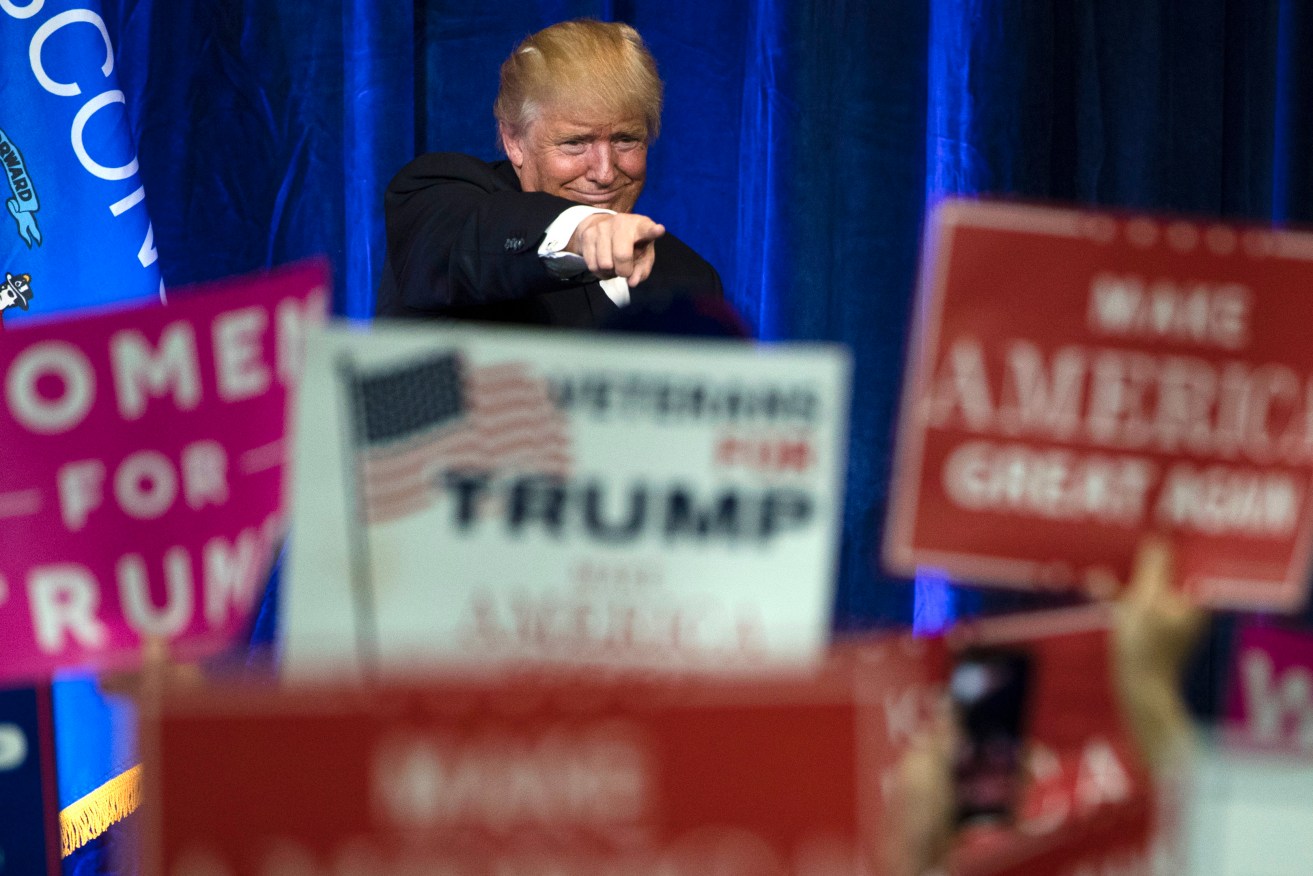Why SA is prime territory for a Trump revolution
Lampooned by the media, thrown out of regular work into Centrelink queues or insecure and casual jobs, ignored by contemporary politics – South Australia’s vast working class has the chance to create real political change, writes Malcolm King.

In his victory speech, President elect Donald Trump praised the working classes - the “forgotten men and women” of America. Photo: AP/Matt Rourke
Economic neoliberalism and the urban cultural left both ignored the sleeping giant – the working class – with the election of Donald Trump as president of the United States.
Trump successfully tapped in to the anger of lower middle class white males, the unemployed and underemployed, who are being gutted by the forces of globalisation, neoliberalism and algorithmic technology. This is history unfolding before our eyes.
Between 1979 and 2013, the wages of the top 1 per cent in America rose after inflation, by 138 per cent. For the bottom 90 per cent, they rose by just 15 per cent, according to statistics compiled by the Economic Policy Institute in Washington DC.
We must return to the UK Enclosure Acts beginning in 1773, to see the genesis of this current turmoil, when tens of thousands of people were displaced and ended up as factory fodder of the industrial revolution. The Luddite movement was a protest, not against progress (a dubious economic concept), but against the use of ‘clock time’ to shackle them to the machines and divorce them from their trades.
The princes of new technology and the lords of international capital now want to take the machines and the factories away from working class men and women and make them scrounge and beg for insecure and casual work. That’s not my idea of progress.
Algorithmic technology or software based ‘equations’, are replacing administrative-based middle-class jobs with ‘robots’, which is widening the gap between the rich and poor. It’s not the rise of the machines but the exit of people.
Higher-paying, middle-class jobs are more secure because they require human judgment and assessment of complex data. Even so, algorithms are replacing recruiters, research tasks for lawyers and some administrative roles. This is only the beginning.
… all the mainstream commercial media can talk about is reality TV shows, balance of payments, productivity ratios, superannuation – anything but the plight of Australia’s four million lower wage earners.
Australian working class people have been mute because contemporary politics gives them no way of telling their stories. So called ‘progressives’ have treated the working class as a source of xenophobia. They are lampooned as bogans and the commercial media brand them as dole bludgers and losers.
For some years I have been writing about unemployment, underemployment and the rise of poverty in South Australia. The reaction of locals to the extermination and offshoring of jobs in Adelaide and regional towns is much the same as Trump voters. While some blame immigration, most recognise that the real threat comes from global forces, which seek to eliminate them completely from the means of production.
The following SA economic figures aren’t trumped up.
- The ABS under-utilisation of labour rate in SA, which sums the number of unemployed and the underemployed people, is 19 per cent (trend) and rising. That’s about 156,000 people out of the 811,000 in the state’s labour force. The number of hidden unemployed – those who have given up looking for work – is around 30,000 people and climbing.
- The rate of youth unemployment (aged between 15 and 19) in SA is 21 per cent, compared with 18.3 per cent nationally. In real terms, it’s closer to 40 per cent in the Iron Triangle in the state’s north and Adelaide’s northern suburbs.
- Private investment has fallen from 7 per cent of Australia’s private investment in 1990 to 5 per cent in 2013.
- Per capita incomes are about 80 per cent of the national average and falling as unemployment and underemployment rises. The 2011 Census showed that 40 per cent of households in Port Pirie, a working class town, had a weekly income of less than $600. In Whyalla, only 57 per cent of the labour force is in full-time work.
- In 2015 more than 35,000 South Australians were referred to the State Government’s debt recovery unit for not paying their Emergency Services Levy. Most couldn’t pay.
- The number of people in Adelaide aged 65 and over is set to double by 2050 to about 370,000 compared to 183,300 in 2011. Age care and dying are boom industries in South Australia.
The Weatherill government is so desperate, it thinks a radioactive dump will fix the state’s problems. Opposition leader Steve Marshall and the Liberals have even less idea. They released a policy document called 2036, which contained no policies. South Australia doesn’t have that long. Of all the states of Australia, South Australia is a prime candidate to ‘do a Trump’.
It’s not just South Australia. Male blue collar unemployment and underemployment is rising in Ipswich, Logan, Caboolture, Bundaberg and Hervey Bay in Queensland; Sydney’s west and Blue Mountains, Canterbury and Bankstown, the Central Coast and Hunter region in NSW; Broadmeadows, Geelong, Ballarat and Bendigo in Victoria; south west Perth in WA and northern and north west Tasmania. No amount of retraining will help these men because their jobs have gone.
In the wake of the Reagan revolution, deindustrialisation spread like a cancer along the highways of blue collar America and into Australia. Yet all the mainstream commercial media can talk about is reality TV shows, balance of payments, productivity ratios, superannuation – anything but the plight of Australia’s four million lower wage earners.
The labour movement was created by the losers from the late industrial revolution. Those losers, acting together, created a future that improved life for the overwhelming majority. It’s from the losers that real change comes.
Malcolm King, an Adelaide writer, works in generational change and is a regular InDaily columnist.




